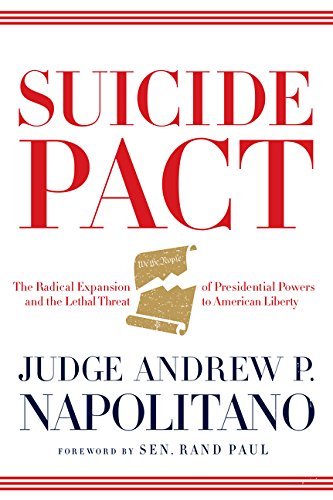Historically, one of the main threads of U.S. foreign policy was called “realism,” that is the measured application of American power on behalf of definable national interests, with U.S. principles preached to others but not imposed.
This approach traced back to the early days of the Republic when the first presidents warned of foreign “entangling alliances” – and President John Quincy Adams, who was with his father at the nation’s dawning, explained in 1821 that while America speaks on behalf of liberty, “she has abstained from interference in the concerns of others, even when conflict has been for principles to which she clings, as to the last vital drop that visits the heart. …
“Wherever the standard of freedom and independence has been or shall be unfurled, there will her heart, her benedictions and her prayers be. But she goes not abroad, in search of monsters to destroy.”
However, in modern times, foreign policy “realism” slid into an association with a cold calculation of power, no longer a defense of the Republic and broader national interests but of narrow, well-connected economic interests. The language of freedom was woven into a banner for greed and plunder. Liberty justified the imposition of dictatorships on troublesome populations. Instead of searching for monsters to destroy, U.S. policy often searched for monsters to install.
In the wake of such heartless actions – like imposing pliable “pro-business” dictatorships on countries such as Iran, Guatemala, Congo, Indonesia, Chile and engaging in the bloodbath of Vietnam – “realism” developed a
 Fascism versus Capitalism
Best Price: $3.39
Buy New $7.45
(as of 05:45 UTC - Details)
deservedly negative reputation as other supposedly more idealistic foreign policy strategies gained preeminence.
Fascism versus Capitalism
Best Price: $3.39
Buy New $7.45
(as of 05:45 UTC - Details)
deservedly negative reputation as other supposedly more idealistic foreign policy strategies gained preeminence.
Some of those approaches essentially turned John Quincy Adams’s admonition on its head by asserting that it is America’s duty to search out foreign monsters to destroy. Whether called “neoconservatism” or “liberal interventionism,” this approach openly advocated U.S. interference in the affairs of other nations and took the sides of people who at least presented themselves as “pro-democracy.”
In recent years, as the ranks of the “realists” – the likes of George Kennan, Henry Kissinger and Brent Scowcroft – have aged and thinned, the ranks of the neocons and their junior partners, the liberal interventionists, swelled.
 Suicide Pact: The Radi...
Best Price: $0.25
Buy New $2.84
(as of 04:15 UTC - Details)
Indeed, these “anti-realists” have now grown dominant, touting themselves as morally superior because they don’t just call for human rights, they take out governments that don’t measure up.
Suicide Pact: The Radi...
Best Price: $0.25
Buy New $2.84
(as of 04:15 UTC - Details)
Indeed, these “anti-realists” have now grown dominant, touting themselves as morally superior because they don’t just call for human rights, they take out governments that don’t measure up.
The primary distinction between the neocons and the liberal interventionists has been the centrality of Israel in the neocons’ thinking while their liberal sidekicks put “humanitarianism” at the core of their world view. But these differences are insignificant, in practice, since the liberal hawks are politically savvy enough not to hold Israel accountable for its human rights crimes and clever enough to join with the neocons in easy-to-sell “regime change” strategies toward targeted countries with weak lobbies in Washington.
In those “regime change” cases, there is also a consensus on how to handle the targeted countries: start with “soft power” – from anti-regime propaganda to funding internal opposition groups to economic sanctions to political destabilization campaigns – and, then if operationally necessary and politically feasible, move to overt military interventions, applying America’s extraordinary military clout.
 Progressivism: A Prime...
Best Price: $8.99
Buy New $10.95
(as of 08:30 UTC - Details)
Progressivism: A Prime...
Best Price: $8.99
Buy New $10.95
(as of 08:30 UTC - Details)
 The Lone Gladio
Best Price: $2.36
Buy New $15.49
(as of 03:55 UTC - Details)
The Lone Gladio
Best Price: $2.36
Buy New $15.49
(as of 03:55 UTC - Details)
 Real Dissent: A Libert...
Best Price: $8.48
Buy New $7.93
(as of 03:10 UTC - Details)
Real Dissent: A Libert...
Best Price: $8.48
Buy New $7.93
(as of 03:10 UTC - Details)
 Amazon Prime (One Year...
Check Amazon for Pricing.
Amazon Prime (One Year...
Check Amazon for Pricing.





